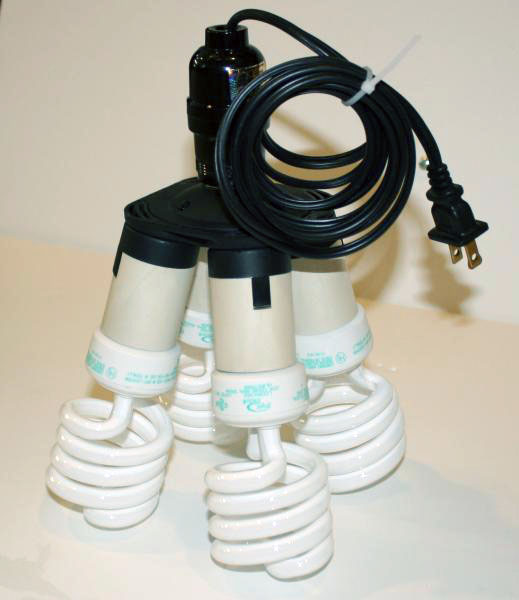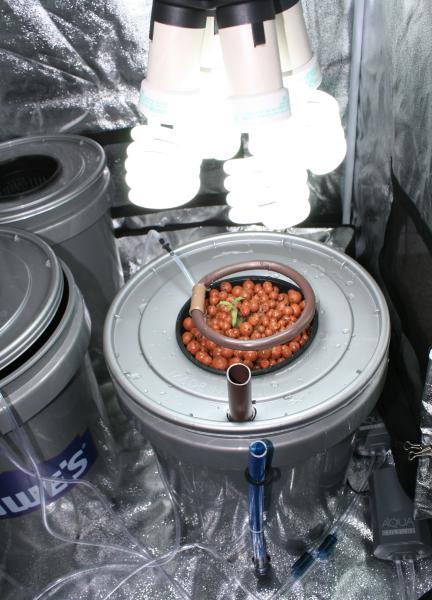The CFL light we are talking about here is the one meant for use in growing environments. Under this project, you can achieve the best results for the vegetative plant development phase with just four CFL bulbs. The best part are the costs that are just one-fourth of the commercial lighting projects. You will need high wattage home kind of CFL bulbs, their color should be somewhere near 6500K for vegetative growth of bulbs. One good feature of this project is that it allows you to mix colors by just changing one light bulb as these are modular units. It means you can gradually shift to the fruiting or flowering red color spectrum as the plants move to next phases of development.

Figure 1: Fouir CFL bulbs
The light socket and cord fixture can be of any type but if you can arrange for a ceramic mixture it would be wonderful as these are too good for rugged use. The one used for this project was a four bulb fixture that are normally used in photography in soft boxes. Their plastic body ensures less heat generation as compared to metal fixtures. The assembly for this project is very bascand as you can see from the picture, the rear end of the light is as simple as any screw bulb.

Figure 2: Seed soaking up the rays
Remember to maintain a fixed distance between the plants and the light, though safer option these bulbs do produce some amount of heat. Too much closeness can always burn or stagnate growth of your plants. So, the fundamental question is, how do these bulbs stack up? For this purpose you can start by taking up measurements at a fundamental level. You can always take a LUX meter for measurement, in this particular experiment the CFL light extended up to 15, 219 LUX at the fixture center. The HydroFarm CFL 150 Watt System on the other hand, peaks at 14, 385 LUX at a more even spread. However, these are just the numbers and the ultimate result depends on how you perceive the data. No doubt the HydroFarm is a winner here but the CFL fixture footprint goes up to 1 SQ Foot while Hydrofarm fixture needs more space.
Filed Under: Reviews


Questions related to this article?
👉Ask and discuss on Electro-Tech-Online.com and EDAboard.com forums.
Tell Us What You Think!!
You must be logged in to post a comment.